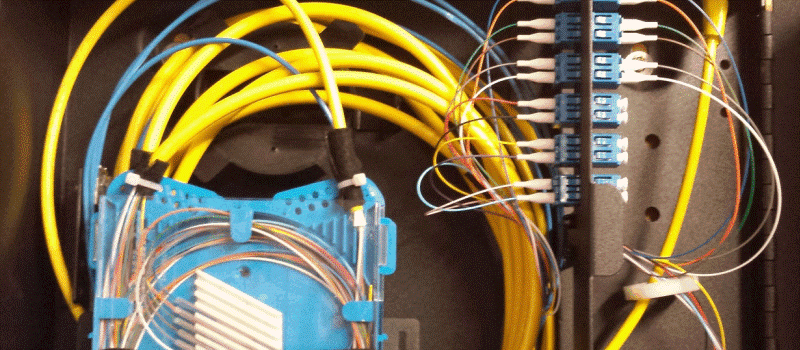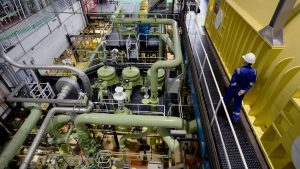Fiber optic cable systems have many advantages over metallic-based communication systems. These advantages include:
Long-distance signal transmission
The low attenuation and superior signal integrity found in optical systems allow much longer intervals of signal transmission than metallic-based systems.
While single-line, voice-grade copper systems longer than a couple of kilometers (1.2 miles) require in-line signal for satisfactory performance, it is not unusual for optical systems to go over 100 kilometers (km), or about 62 miles, with no active or passive processing.
Large bandwidth, light weight, and small diameter
Today’s applications require an ever-increasing amount of bandwidth. Consequently, it is important to consider the space constraints of many end users. It is commonplace to install new cabling within existing duct systems or conduit.
The relatively small diameter and light weight of optical cable make such installations easy and practical, saving valuable conduit space in these environments.
Non-conductivity
Another advantage of fiber optic cable is its dielectric nature. Since optical fiber has no metallic components, it can be installed in areas with electromagnetic interference (EMI), including radio frequency interference (RFI).
Areas with high EMI include utility lines, power-carrying lines, and railroad tracks. All-dielectric cables are also ideal for areas of high lightning-strike incidence.
Security
Unlike metallic-based systems, the dielectric nature of optical fiber makes it impossible to remotely detect the signal being transmitted within the cable. The only way to do so is by accessing the optical fiber.
Accessing the fiber requires intervention that is easily detectable by security surveillance. These circumstances make fiber extremely attractive to governmental bodies, banks, and others with major security concerns.
Designed for future applications needs
Fiber optics is affordable today, as electronics prices fall and optical cable pricing remains low. In many cases, fiber solutions are less costly than copper. As bandwidth demands increase rapidly with technological advances, fiber will continue to play a vital role in the long-term success of telecommunication.










